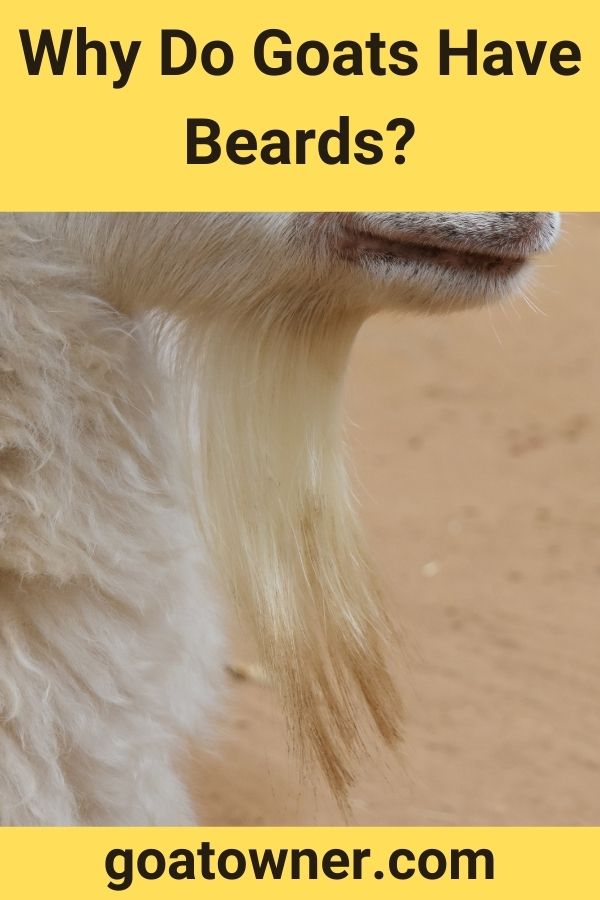While out playing with my young son and my goats the other day, he started stroking one of the more impressive of my goats’ beards.
He’s always been a very inquisitive child, so it didn’t take long before he asked me a question that did get me wondering.
Why do goats have beards?
The simple answer is that they look good to females! A goat’s beard is like the mane of a lion or the brilliant plumage of a male peacock. It serves no purpose as far as survival goes, but allows the male goat to demonstrate he is healthy and full of vitality to female goats.
Almost all goats do grow beards to some extent, so females do have beards as well.
But male beards tend to be longer and bigger, again, demonstrating their good genes for passing on to their kids.
This is called sexual dimorphism, where the two sexes of the same species exhibit different physical appearances.
It is often most pronounced in exotic birds, where the male usually has extremely bright plumage.
In goats, it is limited mostly to the beard but also to the wattles.
Do all goats have beards?
So, even though a big, long, luxurious beard is a really good way for a male goat to attract a female, almost all goats do have some kind of beard.
Female beards just tend to be much shorter than males.
Naturally, there is infinite variety in goat beards considering how common goats are across the world.
Goats live all over the world, whether wild or domesticated and have evolved into a great many differing varieties.
Pygmy goats are one of the most popular pet species of goat and can grow impressive beards for their smaller stature.
The alpine goat is one of the most common throughout the world and can thrive in almost any climate.
They have relatively small beards, and on females, you may not even really be able to see one at all.
The Valais Blackneck is another common breed originating in central Europe.
They have similarly short beards to alpine goats.
Russian white goats are another very common breed that often has very long and impressive beards.
Other common breeds include white shorthaired and Dutch white goats, both of which also have beards.
Dutch white goat female beards are again usually almost nonexistent, though this varies a lot between individuals.
Most commonly domesticated goats tend to have long, flowing beards, as opposed to big bushy ones.
The North American mountain goat, on the other hand, a wild goat living in the mountainous American West, has a thick, full beard covering its entire lower jaw.
So, plainly, beards are pretty universal for goats.
Where does the term ‘goatee’ come from?
You may be wondering about connections between the beards of goats and the once-popular style of beard known as a goatee.
Well, the origins of the style stretch back much further than you might imagine.
It was a popular style in Ancient Greece and Rome, especially in places where the god Pan was worshipped.
Pan was the god of nature, the wild, shepherds and flocks.
He was typically depicted with many features of a goat, including goat hind legs, horns and, of course, the signature beards.
When Christianity came to replace the old pagan religions, much of the imagery and iconography was swapped out.
Satan was very often given the likeness of Pan, which meant that, in the medieval and renaissance world, Satan (the embodiment of evil) was very often depicted with a goatee.
Understandably, they largely went out of fashion in Christendom.
Jumping ahead to the 1940s, goatees became a defining fashion choice of the beatnik movement in post-war USA, remaining popular for around the next twenty years, and then resurging again in the 1990s.
So, the beard of a goat has had a pretty considerable influence on human culture, and for largely the same reason: fashion!
After all, human beards serve no “purpose” other than style.
What are a goat’s wattles?
Close to a goat’s beard, you may also notice two strange, thumb-shaped appendages on its throat.
They can vary in shape and size depending on the breed of goat, and, again, you are likely to notice that males have much larger wattles than females.
Goats are not the only animals with wattles.
They are also very common in birds, such as chickens and cassowaries.
Again, these wattles serve no direct, bodily function.
In goats, they may be an evolutionary relic of a gland goats evolved beyond the need for a long time ago.
Nonetheless, by the process of natural selection, if females tend to prefer goats with larger wattles, then the trait will be reproduced over the generations.
Much like beards or even goat horns, large glands signal a healthy male.
Between their magnificent long beards, their wattles, and their sometimes-enormous heavy horns, goats just love to display their good genes!
Goat beards, then, despite their apparent uselessness for surviving, actually play a very major role in the development and evolution of goats.
Indeed, it’s not even completely crazy to imagine certain breeds were favored by humans because of their impressive beards or horns.
Animals of almost any kind need to be able to put on some kind of display in order to be able to attract a mate and reproduce.
Goats are no exception.
Their impressive beards that would be the envy of a lot people who can’t grow one as long help them attract mates and prove their health and vitality.
For so long have humans been fascinated by the image of goats that this idea of a goatee beard slipped into our very cultural consciousness.

